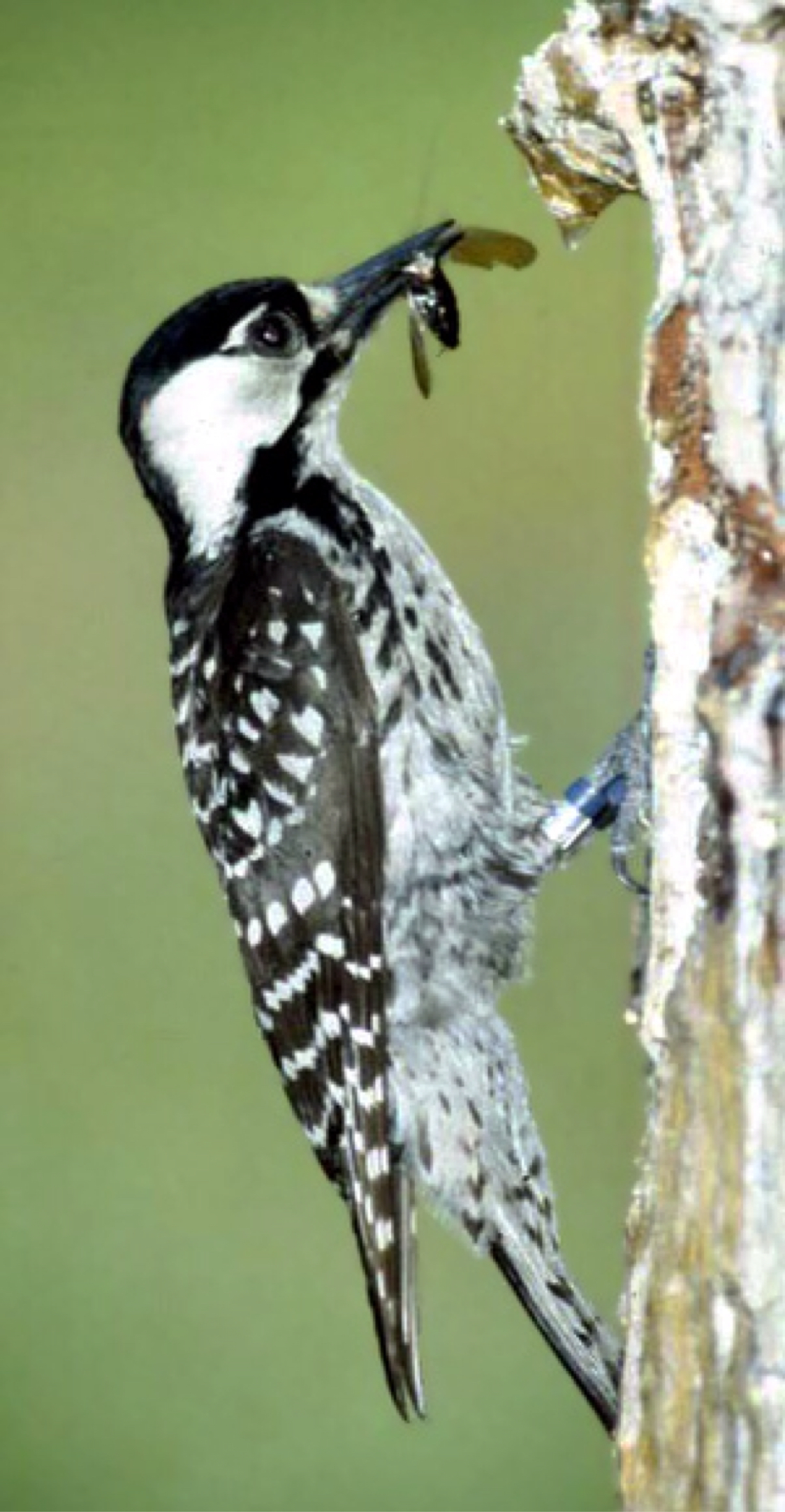Lab #4
Date: 2/10/16
Location: Calloway Forest
Activity: Searching for Red Cockaded Woodpeckers
Habitat: Pine Forest
Temperature: 37.9 F
Wind: 10 mph
Humidity: 36%
Red Cockaded Woodpecker (Luconotopicus borealis)

Male (note the red marking)
Female(no red marking)

For today's lab, the field zoology of spring 2016 headed out to Calloway Forest in search of the critically endangered Red Cockaded Woodpecker. Unfortunately none of us saw any woodpeckers of any kind. We did however see plenty of evidence that they are there in that forest.
Red Cockaded Woodpeckers typically remain in families which are usually made up of 3 to 7 members. Most of these individuals are usually related to each other but sometimes can have a few members outside of the family called drifters. There may be one or two drifters present in the group and their purpose of being there is hope that the alpha breeding male dies so they can take his position. These drifters are males from other families that reached that certain age when it was time to move out. There are no female drifters because the girls don't often leave their original family.
Red Cockaded Woodpeckers live inside of cavities which they themselves carve out using their beaks. They only carve cavities into living longleaf pine trees which have been infected with a fungus that softens the heart wood. The reasons why they are so picky is because these cavities can take up to a decade to carve out and doing it to a healthy tree would take even longer. Living trees are chosen because they will last longer, are less likely to catch fire, and will secrete resin. The woodpecker will peck at the tree to form holes through which resin can flow. The resin acts as a deterrent to keep predators away, namely snakes which find it near impossible to climb on.

This is what a resin covered tree looks like.
Humans have come up with ways to help the red cockaded woodpecker. The first way is quite obvious and that is by created forest refuges for them. Another way is by protecting the already made cavities with metal plates and by creating new ones. The function of putting plates around existing cavity entrances is to not allow other species to make the hole bigger so that they can use it. When we make new cavities for them, the way we do it is by carving out a big hole in the side of the tree and inserting a box.

Man made cavity